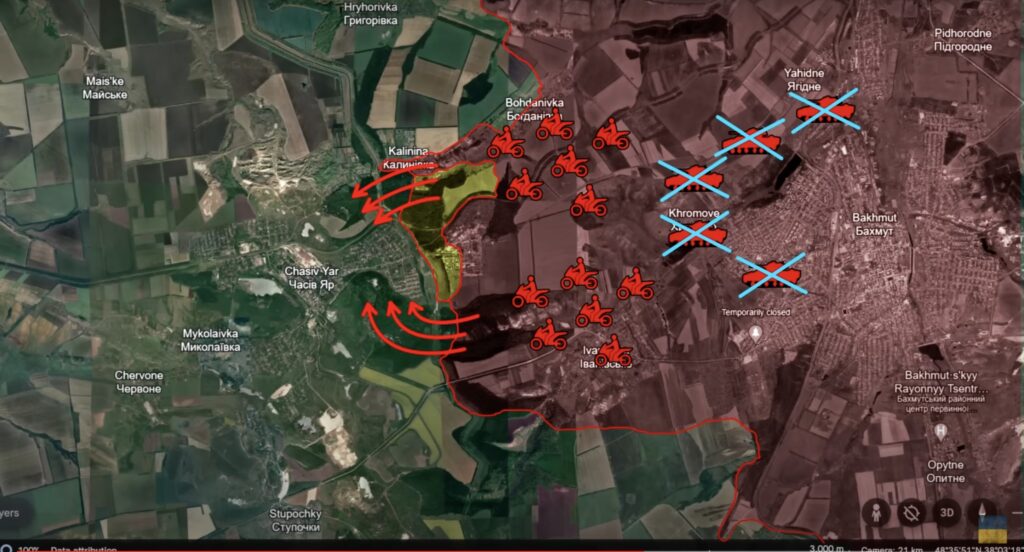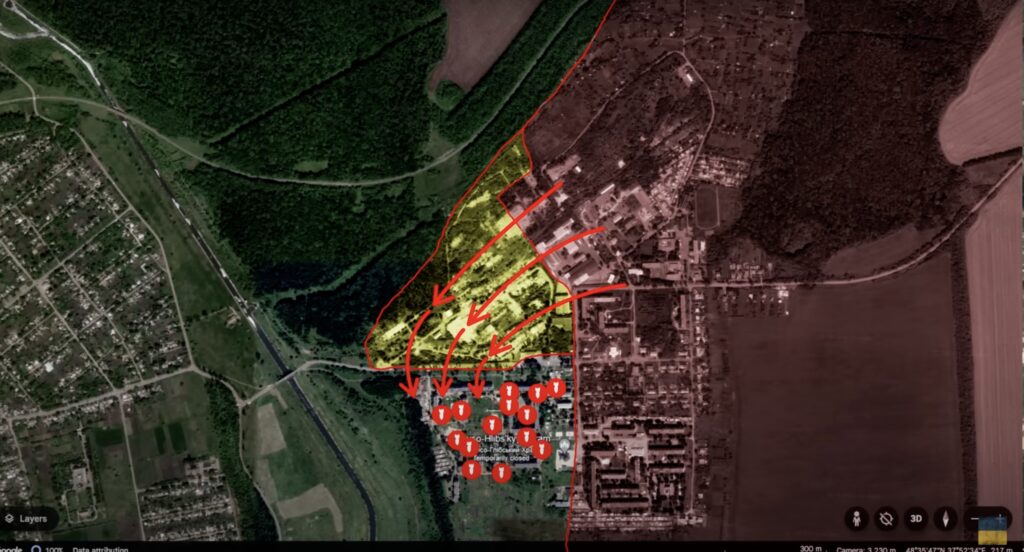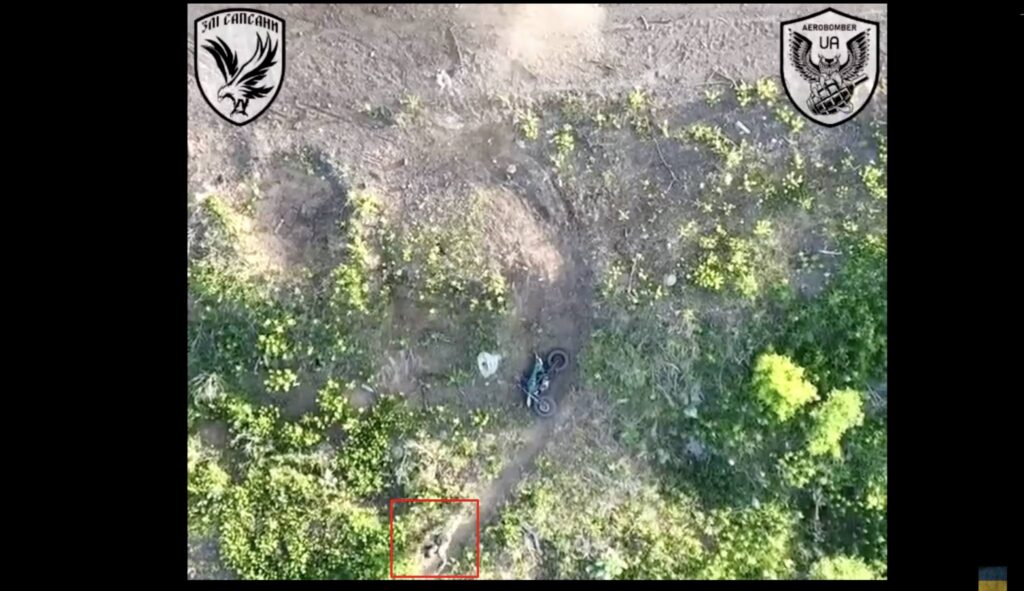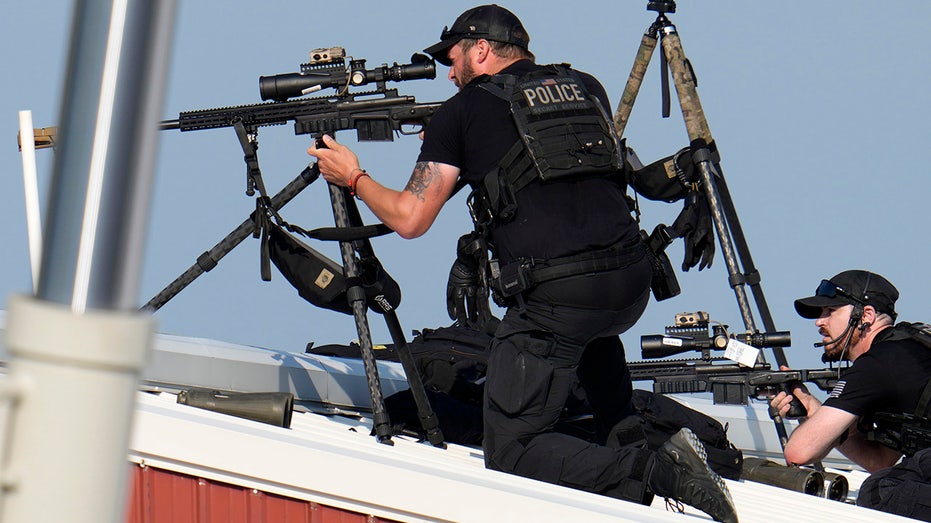Frontline report: Russian motorcycle assaults in Chasiv Yar prove ineffective against Ukrainian drones
Ukrainian forces withdrew from the eastern side of the canal in Chasiv Yar, ceding the battered Kanal district to Russian control, while the Russians exhausted their forces after months-long assaults and started to use motorcycles for troop transport instead of armored vehicles.


Today, 7 July, there is a lot of news from the Bakhmut direction.
The most interesting updates come from the area of Chasiv Yar. Here, after months of intense clashes, the repeated series of Russian frontal assaults finally brought results, leading to the takeover of the Kanal district. Such a significant gain came at a high cost in armored vehicles for the Russian forces, leading to improvized, borderline suicidal methods of assault by motorcycles.
Russian takeover of Kanal district
The primary reason for the increased Russian focus on the Kanal district of Chasiv Yar is their lack of success on the town’s northern and southern flanks. These assaults yielded minimal results and often necessitated the withdrawal of specific units for replenishment.
Consequently, most combat-ready units, heavy equipment, and air support were concentrated in the Kanal district, as it was the only area where the Russians had established a foothold and could make progress.
Once taken, the high-rise buildings in the area would provide Russian fighters with powerful firing positions to suppress Ukrainian forces across the Kanal in the Novy district, which consists of only one-story houses.
Such suppression of Ukrainian positions to the west of the town could, in principle, compromise Ukrainian defenses. This would enable Russian attacks on the canal crossings on the flanks to gain momentum and establish a foothold in the Novy district.
To achieve this, the Russians had to destroy Ukrainian firing positions with intense glide bomb strikes, augmented by artillery and TOS heavy thermobaric systems. These strikes gradually demolished large sections of the high-rise buildings, making them untenable for defense.

Certain entrances to buildings collapsed, and hallways and basements used for bomb shelters were buried in rubble. As a result of the intense bombing and shelling, Ukrainians had fewer defensive positions in the high-rises, allowing for a much smaller number of fighters to be stationed there.
How do Russian forces conduct assaults?
This lengthy process enables the Russians to intensify their assaults with infantry and armored vehicles toward the Kanal district against weaker Ukrainian positions. Before each assault, the Russians typically deploy a small squad of infantry to detect Ukrainian firing positions, then call in artillery and thermobaric systems to target them. These artillery strikes serve as the final stage of preparation for the Russian assault, aiming to disrupt Ukrainian communications and prevent reinforcements from arriving in the area.

While the shelling was still ongoing, the Russians deployed a group of infantrymen to take over the remaining section of the nearby industrial zone still under Ukrainian control. During these assaults, the Russian troops came under fire from Ukrainian AGS automatic grenade launchers, well concealed in nearby forests. Despite this, they established control over the remaining buildings in this part of the district.
Control of the industrial zone placed Ukrainian fighters in the remaining high-rises in greater danger of a flank attack from this newly secured area, in addition to the ongoing Russian strikes and shelling with artillery, aviation, and thermobaric systems. Consequently, the Ukrainian fighters in the area were forced to withdraw to the western side of the canal, leaving the area under complete Russian control.
The Russian command must overcome the canal and advance on its western bank. To achieve this, Russian forces will need to clear the remaining Ukrainian positions on the eastern bank, particularly in the forests near Kalinivka. Only by consolidating their control along the canal can the Russians begin planning their advance into the western part of the town.
Why do Russians use more motorcycles?
Ukrainian fighters in the area reported that Russian troops have intensified their use of assault groups on motorcycles in an effort to advance, supported by intense artillery, air, and drone operations. This shift in tactics is driven by two main factors.
Firstly, the Russians are suffering heavy losses among the armored vehicles intended for infantry transport, so they are improvising with motorcycles as a temporary solution until they can replenish their losses. Secondly, Russian infantry squad commanders are seeking a faster and more flexible means of transportation for their troops.
Until now, these soldiers have been moving on foot, which makes them highly vulnerable to Ukrainian drone and cluster munition strikes.
By using motorcycles, the Russian commanders hope to increase mobility and reduce exposure to these threats, thereby minimizing losses and improving their effectiveness in the area.
In many combat videos published by Ukrainian fighters, it is evident that the use of motorcycles does not offer significant advantages for the Russians when facing experienced drone operators. In one such video from the area, an inexperienced Russian soldier is seen abandoning his motorcycle as soon as he spots a drone overhead.

In his panic, he drops his rifle and flees, while the motorcycle is subsequently destroyed by drone-dropped grenades.
Overall, the Russians have exhausted their forces after months-long assaults on the Kanal district, forcing them to improvise, using motorcycles for troop transport instead of armored vehicles. This lack of readiness for further operations gives Ukrainians the time and space to organize their defenses and prepare for the second phase of the battle for Chasiv Yar.
As such, the loss of the Kanal district is neither critical, nor unexpected, as it is located on the Russia-controlled side of the canal. The main idea behind holding it was to utilize the high-rises to inflict as many losses as possible and leave Russians not intact but completely demolished positions.
The second phase of the Battle for Chasiv Yar is expected to be even more deadly for the Russians, as Ukrainians have established continuous lines of fortifications right on top of the western bank of the canal, which can only be attacked with pure infantry.
In our regular frontline report, we pair up with the military blogger Reporting from Ukraine to keep you informed about what is happening on the battlefield in the Russo-Ukrainian war.


